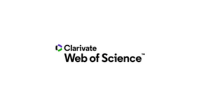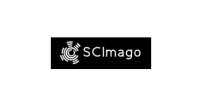Parasitic fauna of Mugil curema in a estuarine ecosystem in the northern coast of the Santa Catarina State, Brazil
DOI:
https://doi.org/10.5380/avs.v27i3.84055Palavras-chave:
Baia da Babitonga, ictioparasitologia, mugilídeos, parati, Rio Parati.Resumo
Mugilids hold a characteristic parasitic fauna that varies according to the environment they live in. Epidemiological studies of this fauna are important for prophylaxis and treatment of zoonotic diseases. The aim of this study was to investigate the parasitic fauna of Mugil curema for 2 years, from November 2015 to October 2017, in estuarine waters of the Northshore of Santa Catarina. A total of 282 specimens were captured with a gillnet in the Parati River, Araquari, SC, Brazil. The fish were necropsied, and its parasitic fauna studied. Tha parasite prevalence rate was 96.81% (273/282), being 97.30% (72/74) females, 94.55% (52/55) males and 97.39% (149/153) nonidentified gender. The prevalence of Neoechinorhynchus curemai was 43.97% (124/282), Ergasilus lizae 77.66% (219/282), Lernaeenicus longiventris 73.05% (206/282), Ascocotyle (Phagicola) longa in the liver 24.04% (96/282) and in the muscle 36.88% (104/282), and Haloporidae was found in 26.13% (29/111). The Parati River has peculiar characteristics on its dynamics, which interferes in the parasitological rates of the fish living there, a relation that still needs better investigation.
Downloads
Publicado
Como Citar
Edição
Seção
Licença
Autores que publicam nesta revista concordam com os seguintes termos:
- Autores mantém os direitos autorais e concedem à revista o direito de primeira publicação, com o trabalho simultaneamente licenciado sob a Creative Commons - Atribuição 4.0 Internacional que permite o compartilhamento do trabalho com reconhecimento da autoria e publicação inicial nesta revista.
- Autores têm autorização para assumir contratos adicionais separadamente, para distribuição não-exclusiva da versão do trabalho publicada nesta revista (ex.: publicar em repositório institucional ou como capítulo de livro), com reconhecimento de autoria e publicação inicial nesta revista.
- Autores têm permissão e são estimulados a publicar e distribuir seu trabalho online (ex.: em repositórios institucionais ou na sua página pessoal) a qualquer ponto antes ou durante o processo editorial, já que isso pode gerar alterações produtivas, bem como aumentar o impacto e a citação do trabalho publicado.














